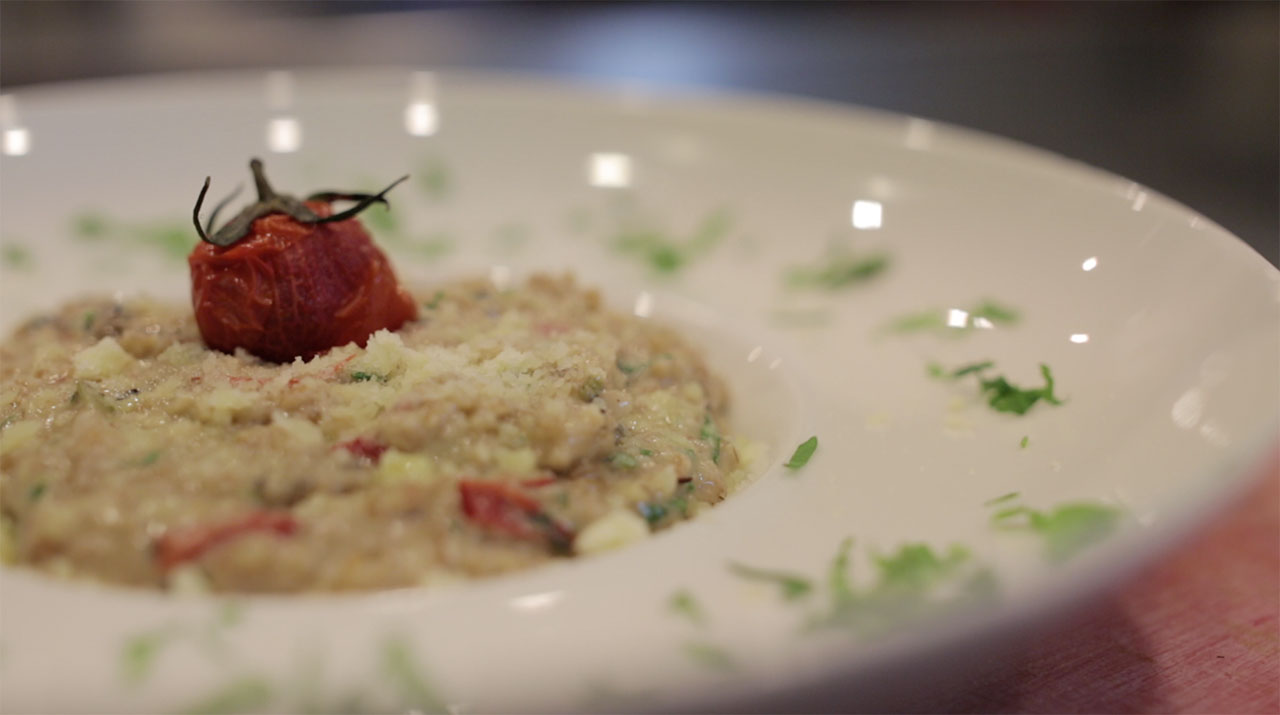I was never someon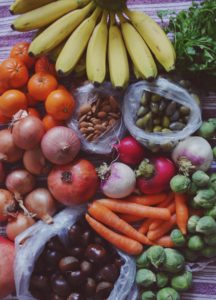 e to get creative in the produce section of my grocery store in New Jersey. I would walk a predictable pattern, throwing a pint or two of strawberries into my basket before moving toward my other favorites: blueberries and bananas. It made no difference if the weather was hot and sunny or the roads were covered in snow, I could walk into that same store and see the same things in their designated locations. Whenever I wanted to cook, I would scroll through the pages of food blogs waiting for anything to catch my eye, then rush off to the store expecting every ingredient I needed to be there for me.
e to get creative in the produce section of my grocery store in New Jersey. I would walk a predictable pattern, throwing a pint or two of strawberries into my basket before moving toward my other favorites: blueberries and bananas. It made no difference if the weather was hot and sunny or the roads were covered in snow, I could walk into that same store and see the same things in their designated locations. Whenever I wanted to cook, I would scroll through the pages of food blogs waiting for anything to catch my eye, then rush off to the store expecting every ingredient I needed to be there for me.
When I arrived back in Istanbul in late May for the year, I was excited to see that the farmers markets were bursting with plump orange Malatya apricots, juicy strawberries that stained their paper bag dark red, overflowing baskets of cherries (which the farmers claimed tasted like baklava), and massive Çanakkale tomatoes. As summer went on things just got better: figs the size of my fists, mountains of bright green beans, and peaches growing bigger and more delicious by the week. I would enter the market with multiple reusable bags and only leave when I could not physically carry anything else.
As the seasons began to change, I watched the staple items in my diet disappearing from the farmers markets to be replaced by something new. The people working in the markets warned us of this each week, shouting about their last batch of certain items, and advising us to enjoy them before it would be too late. And just as they predicted, peaches became pumpkins, apricots became apples, cherries became carrots.
Winter’s arrival would again change the landscape of produce to be found.
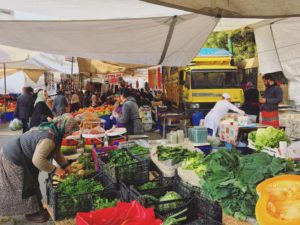
Turkish Bazaar- farmers market
There would be piles of leafy greens, overflowing baskets of beets, pomegranates, and mandarin oranges. People with woven baskets full of chestnuts would beckon shoppers to come sample their product as they roasted it over a fire.
Turkish cooks embrace each change in season. They enjoy each fruit and vegetable when it tastes its best, and then say goodbye until next year as they welcome the next season’s bounty. They also find ways to preserve some items so that they can utilize the flavors of the warmer months during the more sparse winters. Most homes contain items like homemade tomato and pepper paste, dried eggplants strung together and waiting to be stuffed, and dehydrated fruits. They understand that a canned summer tomato will always taste best than a “fresh” winter one. In the cool winter months, those preserved foods provide the flavors of the summer.
As I participated in this seasonal eating, I realized that it makes much more sense than expecting every fresh fruit and vegetable to be around at all times. I wondered why I had not been eating seasonally my whole life. Perhaps it is because the typical American grocery store does not display obvious signs of a change in season. When the same items are available year-round, eating seasonally requires you to make an effort to learn which produce is in season. In Turkey, people grow up with this knowledge as they see the availability of different foods flow through the same cycles every year. I did not set out to learn the seasons for fruits and vegetables in Turkey, but it happened to me naturally as I shopped each week at my nearby farmers market and grocery stores.
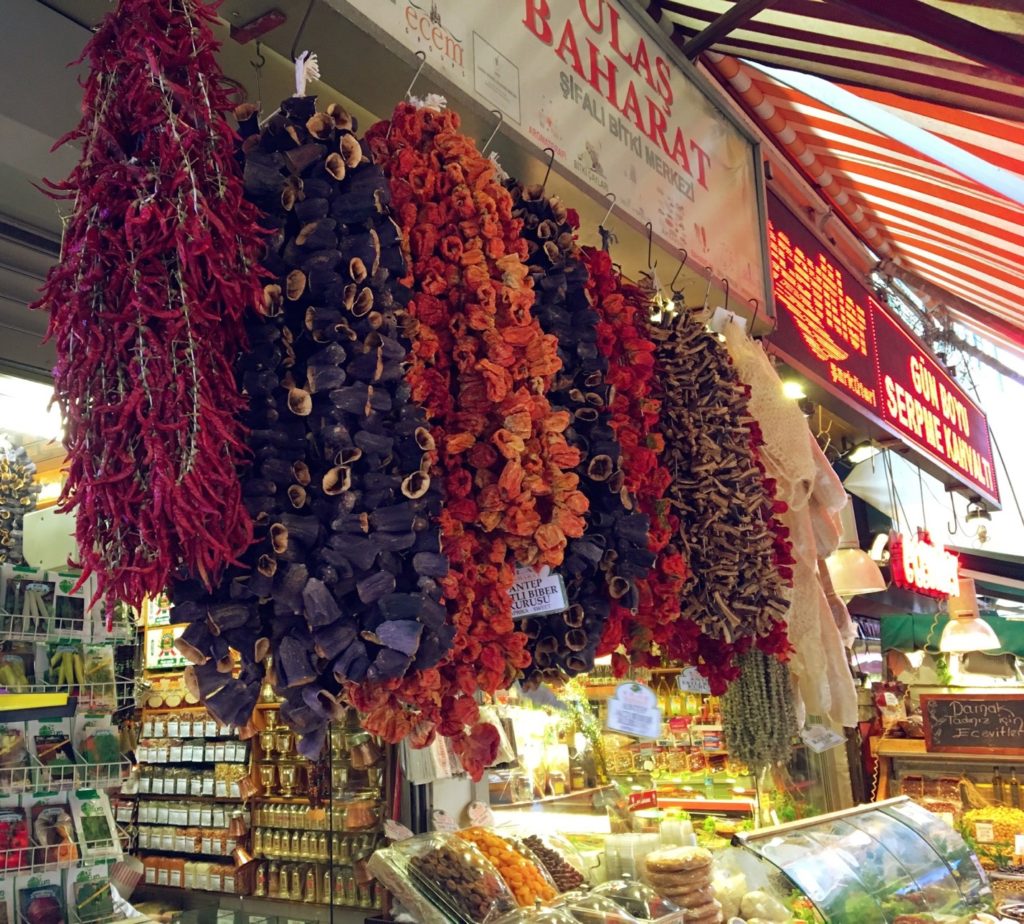
dried vegetables
This different availability based on the season also forces you out of your comfort zone, to try to experiment with what is available at any given time. Rather than having a favorite fruit or vegetable that you consume all year round, you can develop seasonal favorites and look forward to their return. In the fall a local farmer would sell freshly carved pumpkin at the end of my street, and in the spring he switched to carving artichokes, so my own purchases and eating habits changed with what he had available. Having a varied diet ensures that you get adequate nutrients, but also prevents you from getting bored of eating the same foods over and over again.
Of course you will occasionally wish for a big ripe peach in December, or for a rich ch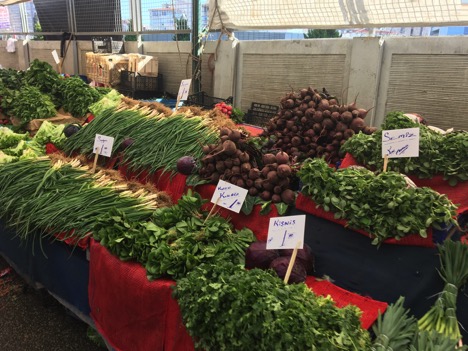 estnut in May, but living in Turkey this past year has transformed me both as a consumer and a cook. Rather than entering the store with a recipe and hoping to find each needed ingredient, I enter my home with bags of whatever fruits and vegetables are in season, and then search for a recipe that utilizes them. I’ve learned to buy things like tomatoes and pumpkin in bulk, and then preserve them as tomato sauce and pumpkin puree in my freezer for when they disappear from the markets. And most importantly, when I see something being sold out of its season, I walk away. When you taste a Turkish strawberry in June, the strawberries in an American grocery store in January don’t seem appealing anymore.
estnut in May, but living in Turkey this past year has transformed me both as a consumer and a cook. Rather than entering the store with a recipe and hoping to find each needed ingredient, I enter my home with bags of whatever fruits and vegetables are in season, and then search for a recipe that utilizes them. I’ve learned to buy things like tomatoes and pumpkin in bulk, and then preserve them as tomato sauce and pumpkin puree in my freezer for when they disappear from the markets. And most importantly, when I see something being sold out of its season, I walk away. When you taste a Turkish strawberry in June, the strawberries in an American grocery store in January don’t seem appealing anymore.
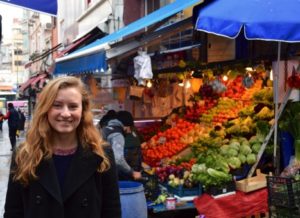
Brittany Peterson has a BS in Nutrition, from the Syracuse University (Class of 2015). She is currently a Dietetic Intern & MS in Nutrition Student at College of Saint Elizabeth
Check out her blog, Anatolian Kitchen
